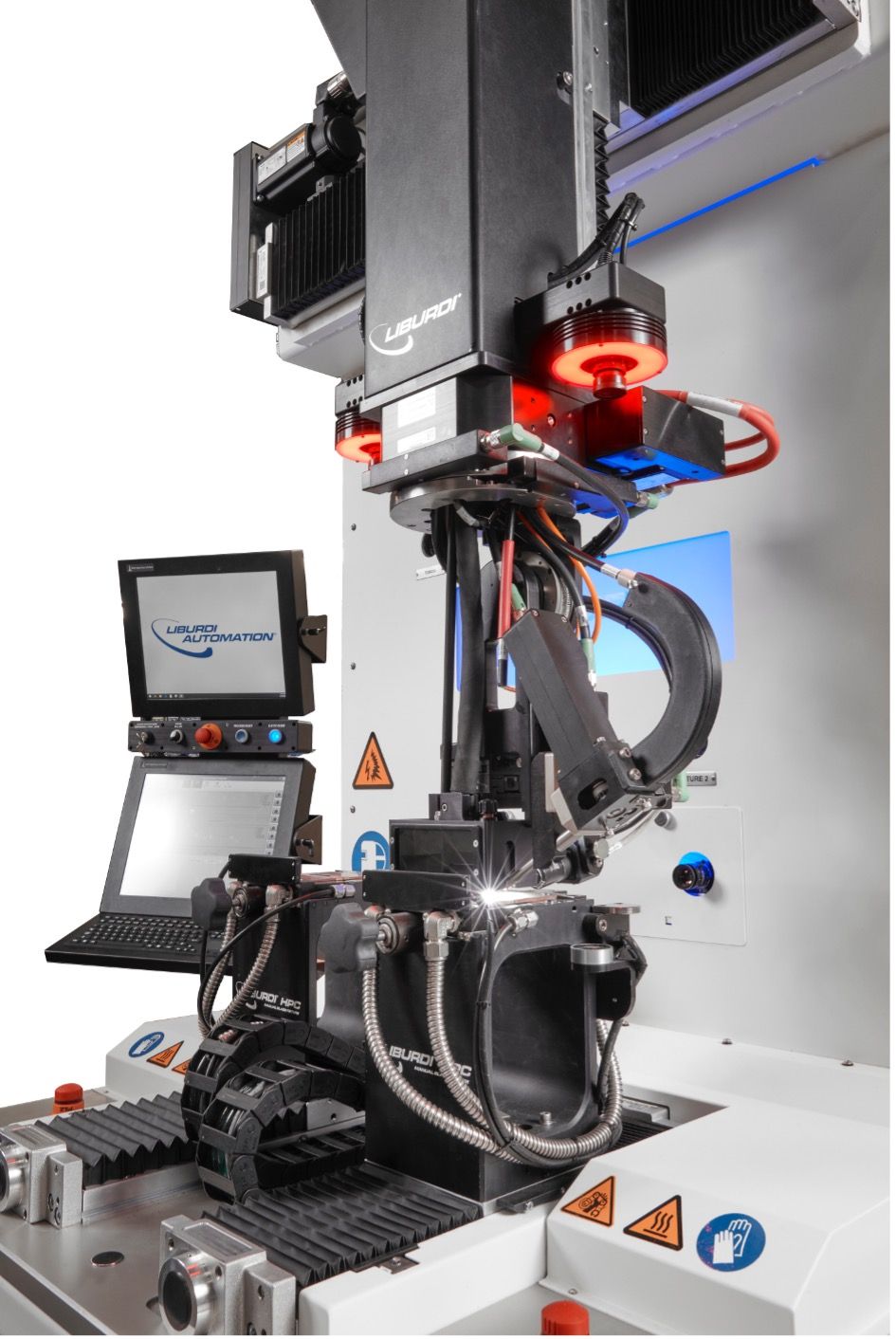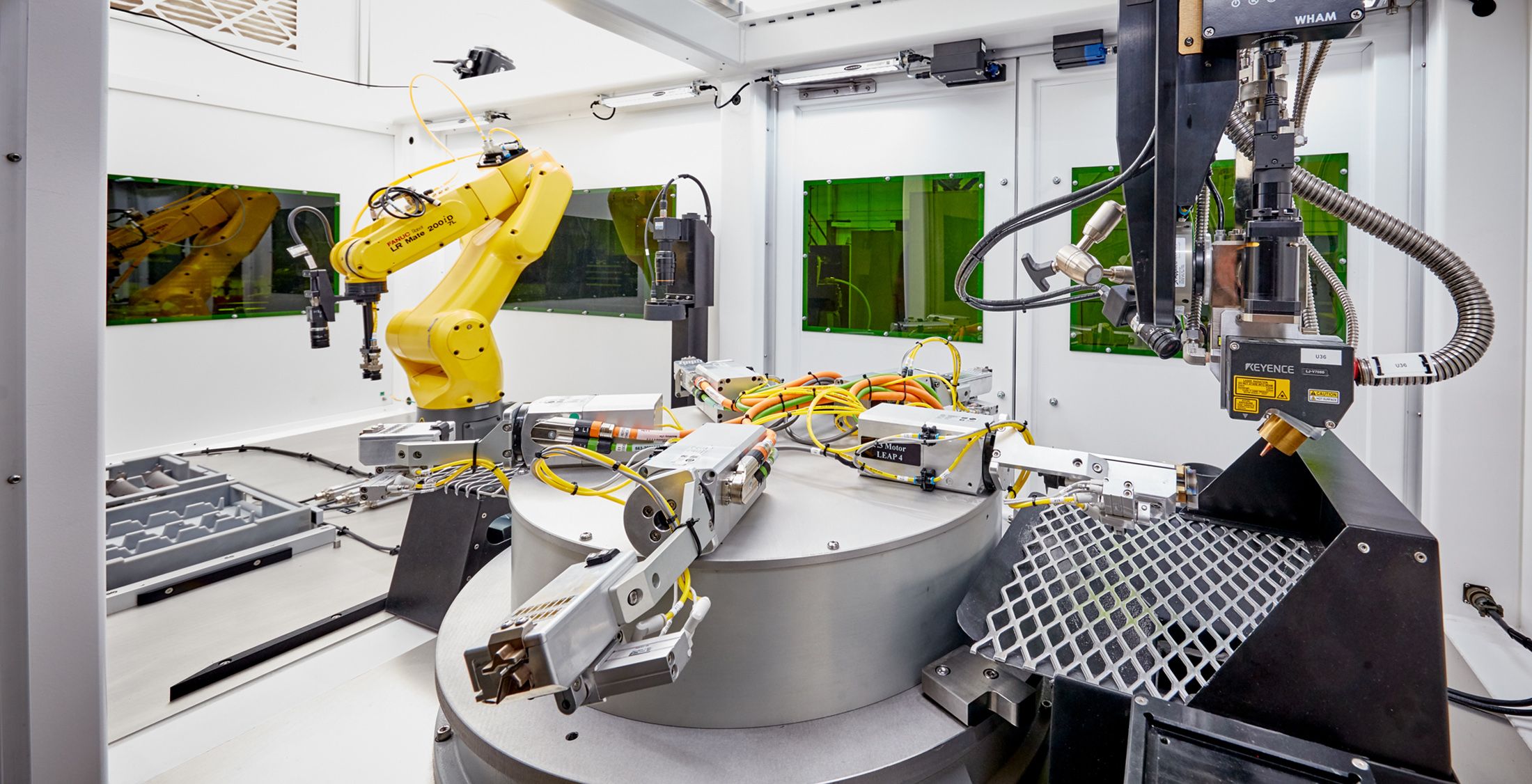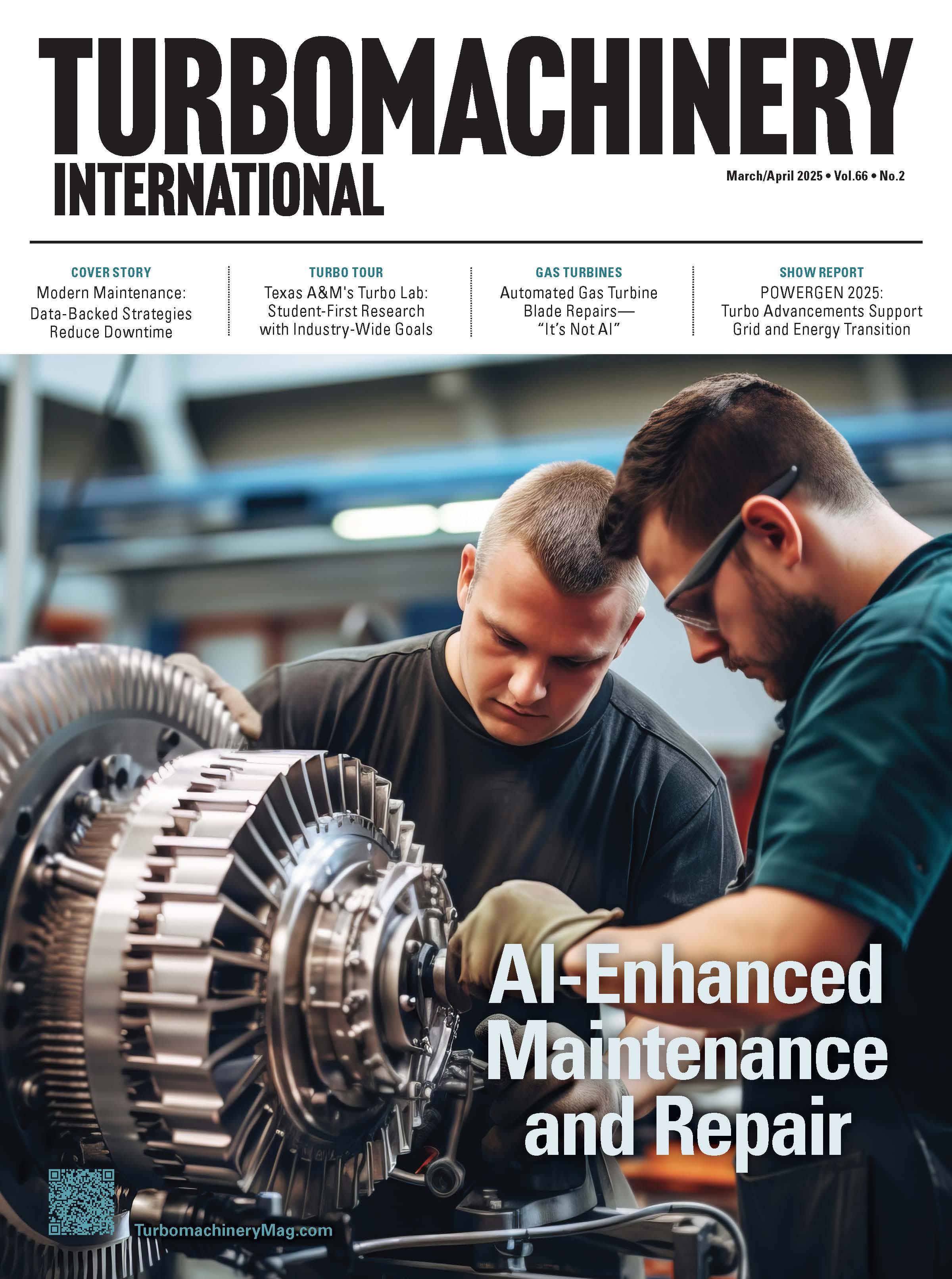Automated Gas Turbine Blade Repairs—“It’s Not AI”
Leveraging visioning systems and rule-based knowledge, while not AI, provides repeatable and reliable repairs for the aerospace and industrial gas turbine industries.
It's all the rage. Everyone seems to be talking about artificial intelligence (AI)—from those in the investor community to computer component and system developers, social network contributors, and even politicians. AI poses potential risks and substantial benefits to society as the technology integrates into our daily lives. Often mistaken for AI, many companies have employed “built-up knowledge” from many years in the gas turbine industry.
What is AI? AI is the simulation of human intelligence in machines that is designed to think, learn, and make decisions. AI systems can perform tasks that typically require human cognition, such as problem-solving, recognizing patterns, understanding language, and making predictions.
In the operation of gas turbines, whether flight variants or industrial variants, OEM engineers have instead employed rule-based techniques that observe the current state of an engine’s operation and then decide how to modify various control parameters to maximize the engine’s performance.
Using the deep knowledge of the teams of engineers that designed the engine, these engineers are essentially embedding their knowledge or “intelligence” within the applicable control systems. Likewise, in the repair segment of the gas turbine market, knowledge gained from years of repairing components on gas turbines may also be applied using advanced robotics, visioning systems, and precise welding techniques. Literally decades of applied learnings have been captured and embodied in automated weld repair systems.
EXPERIENCE + ROBOTICS + INFORMATION SYSTEMS
For decades, repair experience has been merging with advanced robotic and information systems. Welding has been around for centuries, if not thousands of years, with modern welding dating back to the early 1800s and automated welding to the early 1900s. Codes and standards exist based on the process’s established and extended history. The challenge involves ever-evolving repair and manufacturing geometries and toolpath strategies that affect the structural integrity of the welds.
Credit: Liburdi Turbines

Over the past 40 years, Liburdi Automated Welding Systems (LAWS) has leveraged this knowledge to integrate software, electronics, mechanical, and materials science into LAWS. This system has changed aero and gas turbine repairs by bringing automation and embedded intelligence to the repair process.
Today, these advanced systems generate accurate telemetry on all the key process variables (KPV) used in the systems, including system “health” indicators. The KPVs include but are not limited to:
- arc voltage and amps
- wire feed rates
- laser power
- powder flow rates
- gantry position
- rotary and tilt positions
- gas flow levels
- weld monitor videos
- thermal sensing
- acoustics sensors
- oxygen analyzers
Combined, these provide a wealth of information that can be summarized in an experiential database. Historically, this data was singular and optimized individually, but by applying knowledge-based experience, it is possible to inspect this big data and generate trends for qualifying a good versus bad part.
In a world where the availability of skilled specialists is increasingly sparse, leveraging visioning systems and rule-based knowledge to provide repeatable and reliable repairs is both possible and imperative.
Initial validation comes from destructive (optical microscopy, scanning and transmission electron microscopy, tensile, fatigue, creep, etc.) and non-destructive testing (X-ray, CT scans, Eddy current, fluorescent penetrant inspection, acoustic emissions, etc.). By teaching the machine good versus bad welds, subsequent validation comes from the generated telemetry, which has the potential to substantially reduce material testing and qualification costs in the long term.
DEVELOPMENT OF VISIONING SYSTEMS TO SEE AND DISCERN COMPONENT CONDITIONS
Many automated welders still require an operator to fine-tune the ongoing weld to cool down or heat the melt pool, increase or decrease travel speed, and move the weld head up or down to increase or decrease shield gas, depending on the substrate’s condition. These incremental changes rely on the operator’s experienced eye and history, which makes them subjective.
Subjectiveness can be gradually removed by using in-situ optical monitoring. Each completed weld increases the algorithm’s robustness, teaching the machine what to look for in the image, including arc gap, image brightness, melt pool geometry, feedstock position, temperature, etc. When implemented, these tools help accurately track the weld seam centerline and change weld parameters on-the-go to maintain a specific melt pool cooling rate target or account for a thickness change within the substrate.
These efforts help bridge the last gap in exceeding 99% sound welds and can substantially reduce the error introduced by part-to-part variability, especially in the repair side of the process.
APPLICATION OF ADVANCED ROBOTIC SYSTEMS
The best flagship machine that sums up these innovations is the LAWS1000 FA, which can be used for manufacturing or repair processes. The 1000 FA has automated the process of loading and unloading low-pressure turbine blades by using an optical character recognition process to automatically store blade information (serial number, stage, engine, etc.) and link it to welding parameters, quick disconnect custom fixtures, offline scanning and toolpath generation, coaxial or lance powder nozzles, extraction system, etc.
Credit: Liburdi Turbines

"NOT AI" KNOWLEDGE-BASED SYSTEMS
In a world where the availability of skilled specialists, such as repair engineers, welding technicians, and other repair skills, is increasingly sparse, leveraging visioning systems and rule-based knowledge to provide repeatable and reliable repairs is both possible and imperative.
While the world is “buzzing” about AI, using knowledge-based systems, while not AI, is making valuable contributions to our industry. It is possible to envision a world where these repair methods are increasingly applied across both the aerospace and industrial gas turbine industries.
About the Authors
Anthony Brough is the Principal Consultant of Dora Partners & Company, an independent energy consulting firm serving the gas and steam turbine and renewable energy markets.
Nejib Chekir is the Manager of Materials R&D at Liburdi Turbine Services.
Andrew Laing is the Liburdi Automated Welding Systems (LAWS) Sales Manager at Liburdi Turbine Services.
